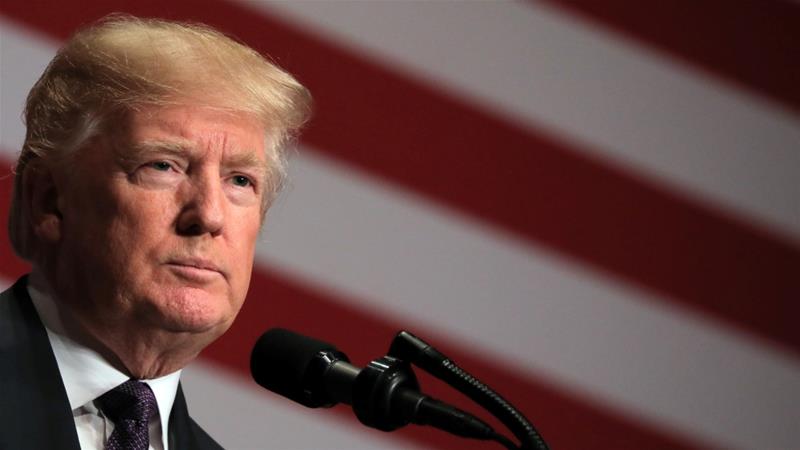US migrant agenda 'dangerous despite deportations cut'

Data from the US and Mexico shows Obama removing more Mexican citizens, though Trump has stepped up interior removals.
The administration of President Donald Trump is still pursuing “a dangerous anti-immigrant agenda”, activists have warned, despite recent figures showing a significant decrease in the number of deportations of Mexican citizens from the United States.
According to data by the US Immigration and Customs Enforcement (ICE) agency, deportations of Mexican citizens for the 2017 fiscal year – which run from October 1, 2016, to September 30, 2017 – stood at 128,765.
In the same period the year before, the administration of ex-President Barack Obama deported 149,821 Mexican citizens, a difference of more than 21,000.
The government of Mexico tracks the numbers of its citizens who were “repatriated” from the US, and it placed the 2017 number at roughly 151,000 through November. Official Mexican data from 2016 said “repatriations” stood at about 190,000 over the same period.
These figures are striking, as Trump’s election campaign platform took a tough stance on immigration, including from Latin America.
At a 2015 rally announcing his intention to run for the presidency, Trump controversially said that Mexican immigrants were “bringing drugs. They’re bringing crime. They’re rapists”, before going on to say he assumed that “some are good people.”
Trump, who was sworn in as US president on January 20, has also repeatedly promised to build a wall on the US-Mexico border to limit immigration.
The broader picture
Despite the decrease in numbers of Mexicans being deported, Salvador Sarmiento, legislative director for the National Day Laborers Organization, told Al Jazeera that these numbers are not the only aspect by which people should judge Trump’s immigration policies.
There are “increased detention contracts” at private detention centres, while “racist profiling and police collusion are all expanding, and will affect us for years to come”, said Sarmiento, whose group aims to further the “civil, labor and human rights” of the largely undocumented and Latino day labourer workforce.
Immigrant communities increasingly feel under threat, not only from ICE but from law enforcement in their own communities, he added.
Local law enforcement is increasingly asking to be deputised by ICE, which allows state and local police to enforce federal immigration law.
Sarmiento said “it’s wishful thinking” to say the Trump administration “is not moving a dangerous anti-immigrant agenda”.
Last month, the US Supreme Court allowed the Trump administration to fully enforce the third version of a controversial travel ban that prohibits people from six Muslim-majority countries from entering the US.
The ban applies to people from Chad, Iran, Libya, Somalia, Syria and Yemen.
Interior and exterior
While the numbers of Mexican citizens and deportations overall have seen a decrease, the Trump administration increased deportations from the interior of the country by roughly 25 percent, or 16,271 people.
Trump “has stepped up immigration enforcement noticeably”, said Jessica Vaughan, director of policy studies at the Center for Immigration Studies (CIS) told Al Jazeera.
“Part of the increase is because officers are no longer required to look the other way at illegal aliens they identify who are not the most serious criminals,” she told Al Jazeera.
CIS was labelled last year a “hate group” by the Southern Poverty Law Center for its alleged ties to John Tanton, the “father of the modern nativist movement” which is “anti-immigrant”. The group describes itself a “low-immigration” but “pro-immigrant” nonprofit.
In 2017, ICE increased deportations of people with a criminal record by about 7,000, while non-criminal interior removals rose by nearly 9,000.
The overall decrease comes from the border, where removals have been counted towards total deportations since 2008.
The Obama administration removed far more undocumented migrants from the border during both the 2015 and 2016 fiscal years.
Vaughan said this could mean that “fewer people are trying to cross illegally, most likely because they are deterred by Trump’s promises of more serious enforcement”.
The White House did not address deportation numbers during its press briefing on year-end accomplishments in December.
Source: Read Full Article
